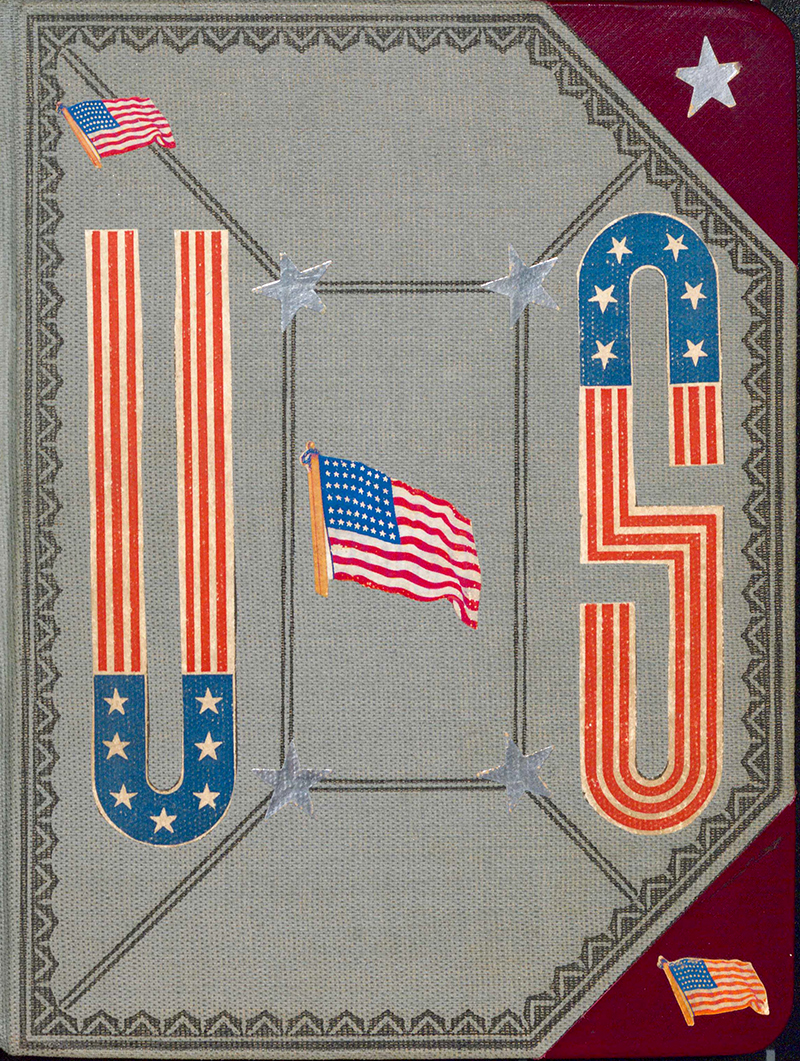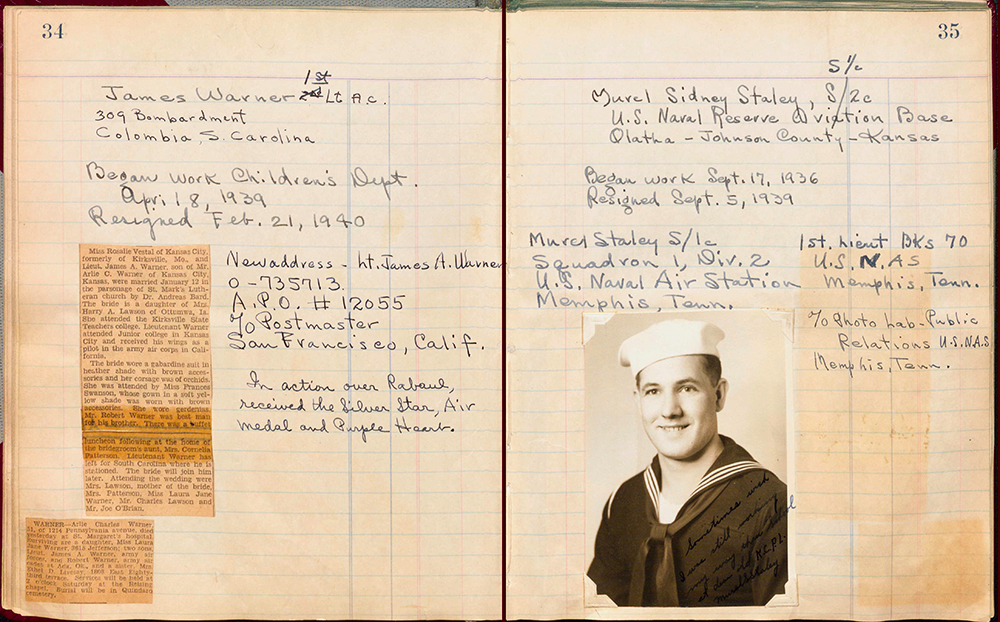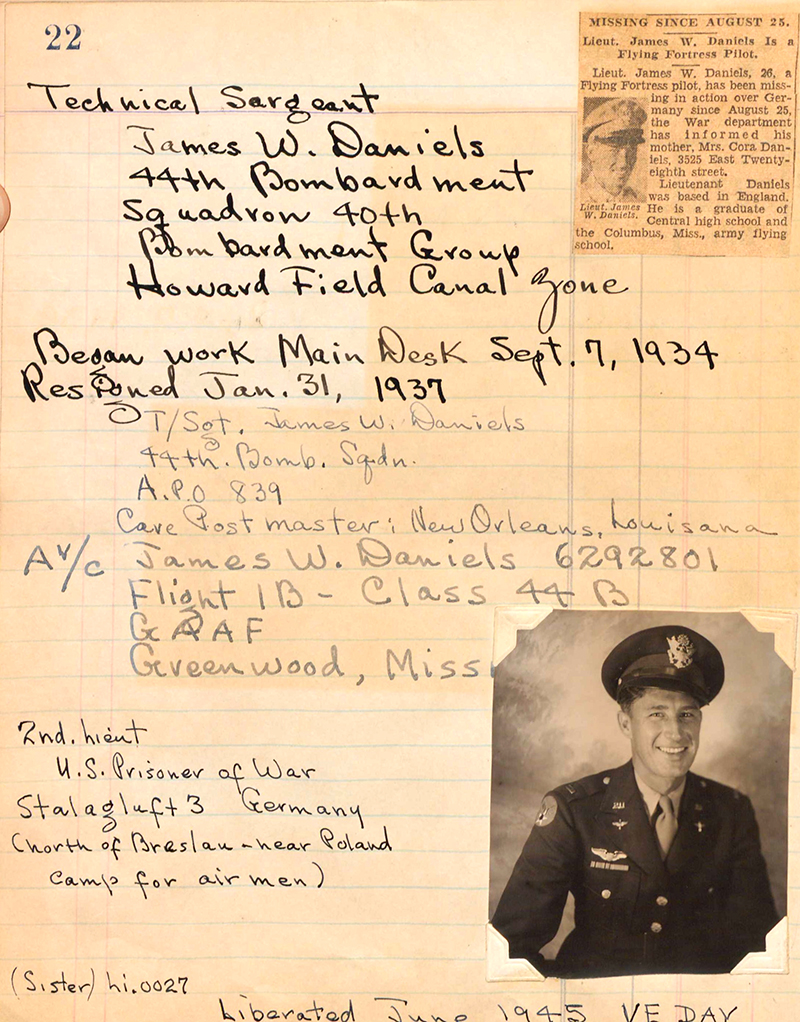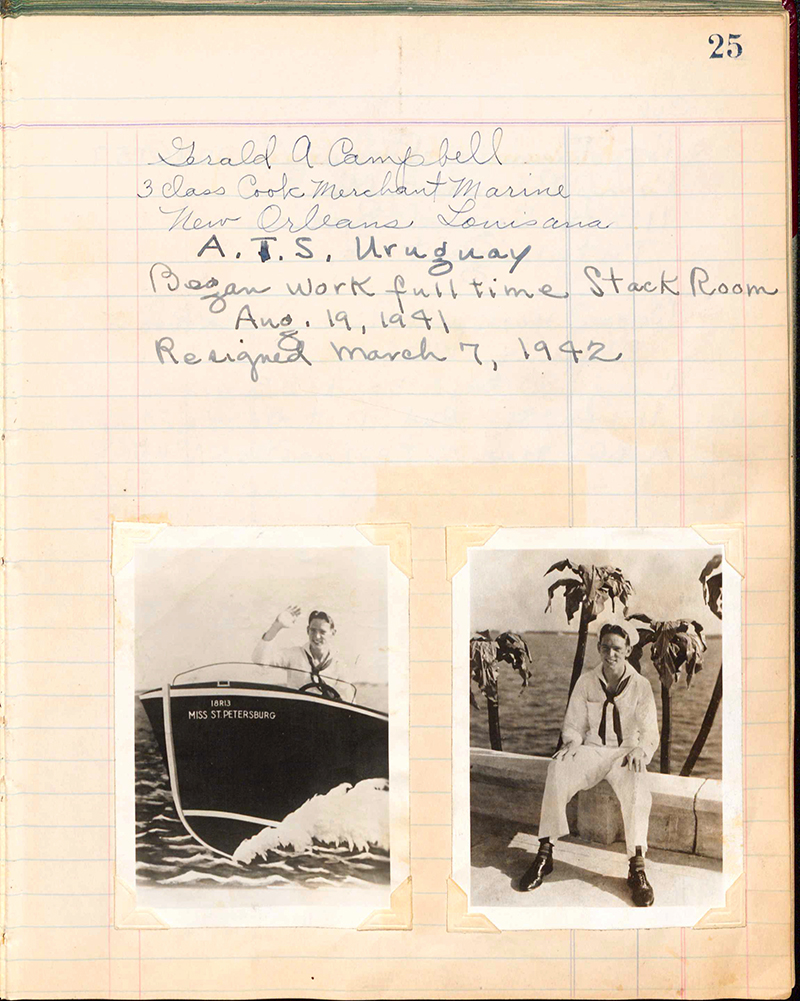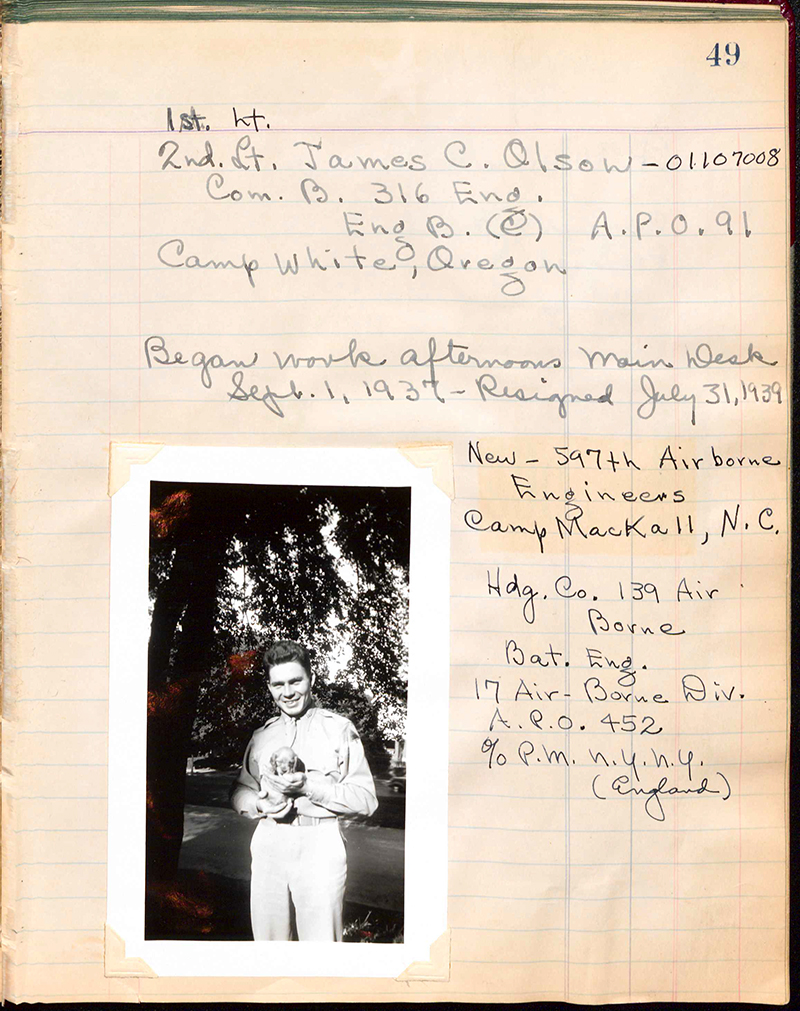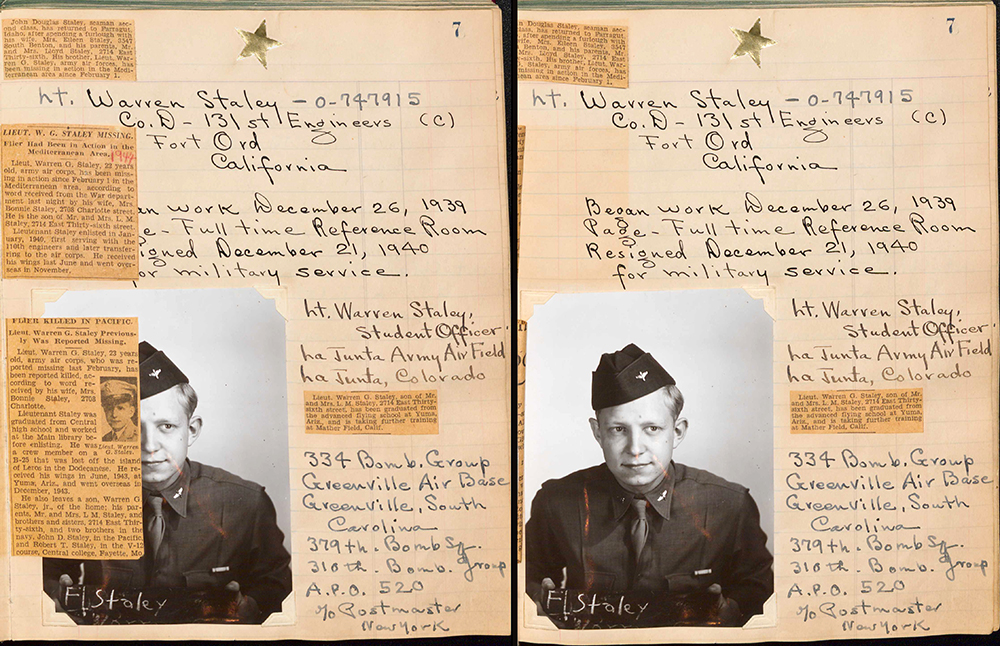There are 147 names recorded in what is interchangeably called the “Honor Book,” “Honor Roll,” and the “War Record of Pages of Kansas City Public Library.” It was created by John Rankin Greenlee, Chief of the Stacks of the old Main Library building at 9th and Locust, who took it upon himself to record and track former library pages and assistants who served in World War II. (Higher level employees don’t appear to have been included.) Now, just in time for Veterans Day of 2020, the book has been digitized and made available on kchistory.org.
Inside the sticker-clad cover, the book contains photos, articles, newsletter pages, and additional information about former library staffers. Some pages only include a name and a brief note of where they were stationed in the service or which library department or branch they worked in. Other pages have photos and newspaper clippings pasted onto them, sometimes obscuring other information.
Every branch of the U.S. Armed Forces is represented by the 141 men listed inside. At least three of them spent time as prisoners of war in Germany or Japan. Six women are also included on pages 203-208, having served with the American Red Cross, Women’s Army Auxiliary Corps (WAAC), or the Women’s Army Corps (WAC). A full of index of names is at the end of the book.
Practically speaking, the honor roll served as a kind of address book for service men and women. Library employee newsletters glued onto the later pages indicate Greenlee and other staffers regularly corresponded with their former colleagues. As the war progressed, addresses, news, and status changes were added. Sadly, yellow star-shaped stickers appear on six different pages, indicating individuals killed in action.
It’s difficult to say if the honor roll represents a complete list of former library pages and assistants who served in the war or if some were overlooked. It appears the book was last updated in 1946.
The Honor Book is part of the Kansas City Public Library’s institutional archives, housed in Missouri Valley Special Collections.

